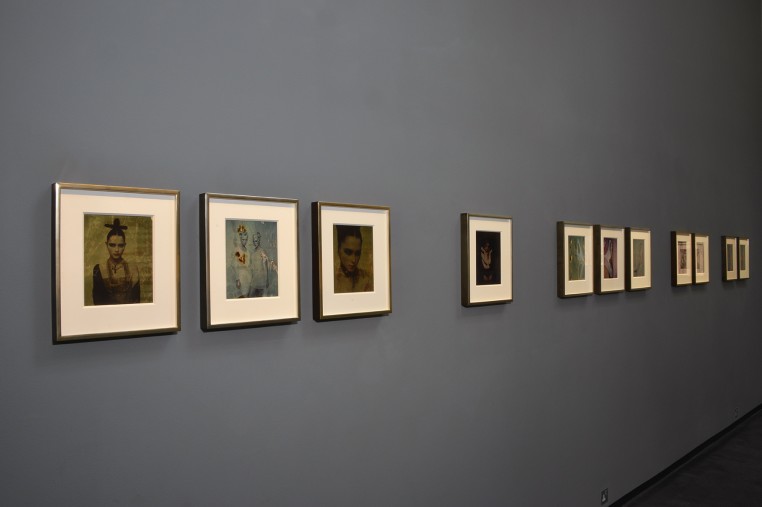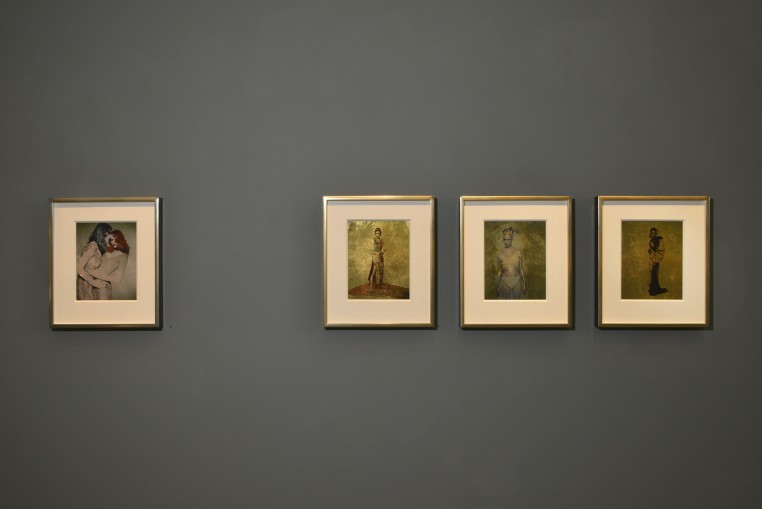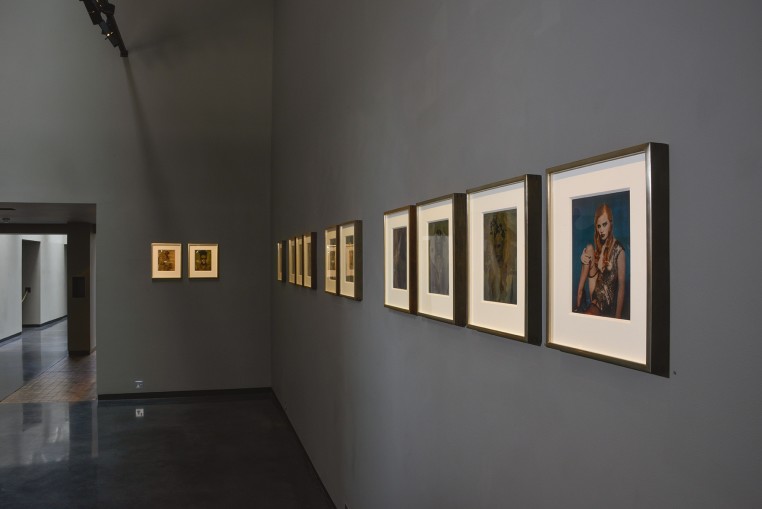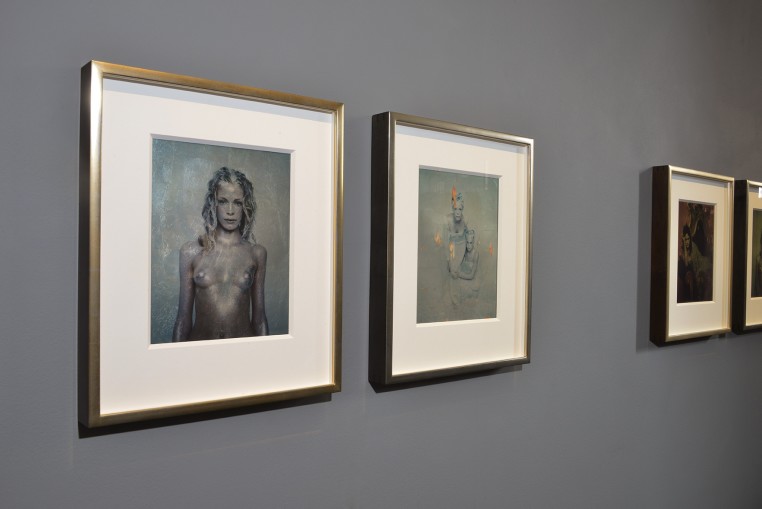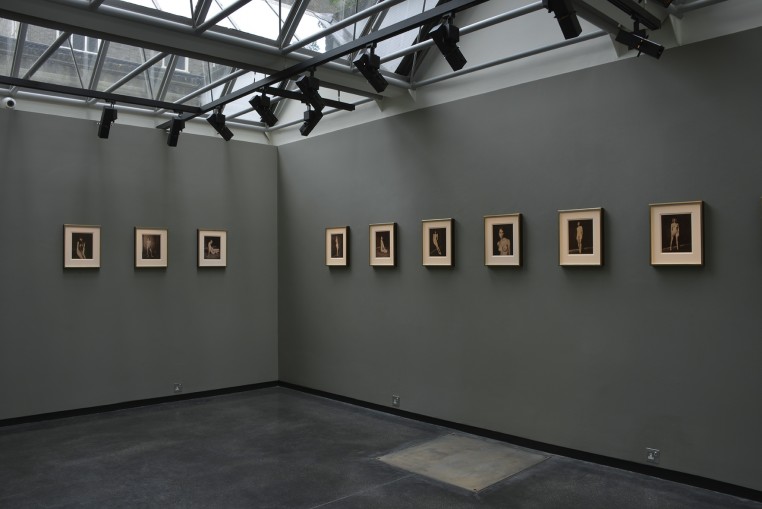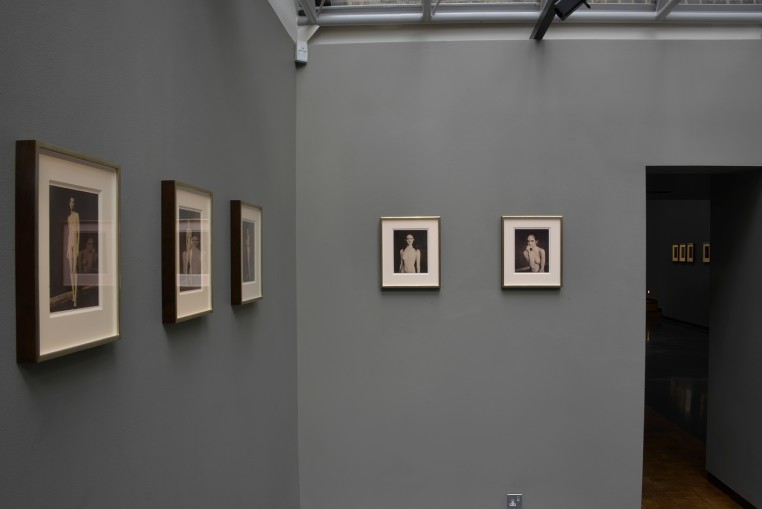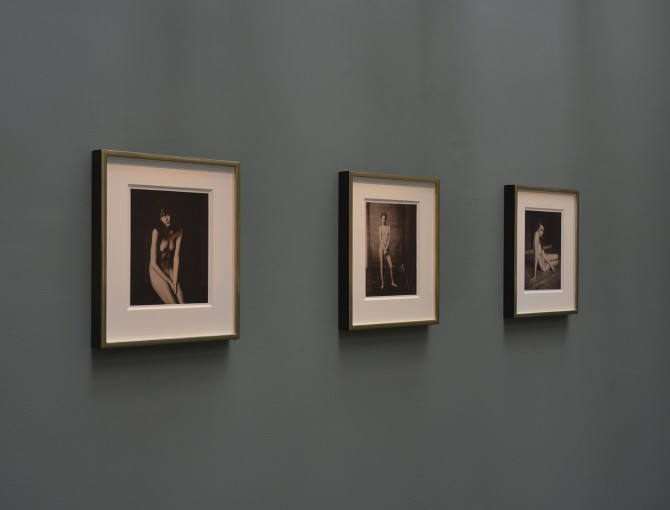Hamiltons presented Polaroids, an exhibition by renowned fashion photographer, Paolo Roversi, 2 July – 14 August 2015. Consisting of a selection of both colour and black and white Polaroids, shot in Roversi’s trademark 8 x 10” film, the selection from Roversi’s diverse and adventurous archive of work illustrated his status as one of fashion’s pre-eminent photographers.
“As soon as I discovered this type of film I was enchanted by it. Even now I still feel this way and I cannot justify the reason. You know how you fall in love with something—maybe it was the colour, the contrast. It became my palette immediately.”
These rare, colour Polaroids are shot with the 8 x 10” Polaroid film and then applied with gold and silver leaf before being laminated, creating the almost mystic and painterly quality for which his work is known. The nude portraits are sepia-toned, created by combining black and white with colour, which produces an almost solarizing effect unlike any other photographic process.
“Over the course of a few years The Polaroid Company extended its range of instant films 8 x 10” with a new transparent film called 891. This particular transparency gave me the opportunity to add other textures to the original support creating new effects of almost three-dimensional images. Perhaps inspired by the beautiful Byzantine Mosaics that enriched my childhood in Ravenna, I started to work with the thinnest gold and silver leaves, which bring to the images a certain fragility and unexpected reflections creating a sort of magic mirror.
In the same corner of my studio, I took some nude portraits of girls. As the light flows through the window, it is not easy to describe the emotion of the moment in which my subject is there, against the wall, cut off from the rest of the world, abandoned to this strange solitude, in front of my camera with her entire life, all her beauty, sublimated by the northerly light.”
Roversi’s distinctive work is characterized by an ethereal and almost other-worldly quality. Italian fashion designer Romeo Gigli, who has worked with Roversi for many years, believes Roversi “succeeds in seizing a fleeting moment, a tremor of emotion which projects the women themselves into a timeless dimension – a classical and yet absolutely modern dimension of history and myth.” Vogue Hommes’ artistic director Christian Ravera is not alone in believing that no other photographer makes women appear more beautiful, nor goes so far as to capture the depths of his subject’s soul. Roversi uses a slow exposure of two or three seconds which can in part explain this powerful exchange with the person he is photographing. “You can’t explain this scientifically, but the look it gives is more intense, more profound than when you expose with a quick flash. It’s as if it allows time for the soul to appear.” Roversi’s style of fashion photography, marked by great sensibility and delicacy, is very close to 19th century portraiture, and perhaps more so even, than contemporary fashion photography.
“Photography goes beyond the limits of reality and illusion. It brushes up against another life, another dimension, revealing not only what is there but what is not there. Every photograph is an encounter, an intimate, reciprocal confession.”
Born in Ravenna, Italy in 1947, Roversi has lived and worked in Paris for over 35 years. His interest in photography materialized in 1964 in the form of portraiture on a family holiday to Spain. In 1972, Roversi moved to Paris at the invitation of Peter Knapp, Elle’s renowned Art Director, and soon began to take an interest in fashion photography. Roversi undertook work for magazines such as Elle and Marie Claire and, following a Christian Dior beauty campaign in 1980, had soon established himself as one of fashion’s foremost photographers.
Roversi’s work has frequently been the subject of monographs, including Nudi (Editions Stromboli, Paris: 1999), Paolo Roversi: Libretto (Steidl, Göttingen: 2000), and Studio (Steidl, Göttingen and Editions Stromboli, Paris: 2002). He has run advertising campaigns for Cerruti, Comme des Garçons, Christian Dior, Yves Saint-Laurent, and Valentino, and his work has been published in an international selection of publications such as Harper's Bazaar, I-D, Interview, Marie-Claire, The New York Times Magazine,Italian and British Vogue and W.

